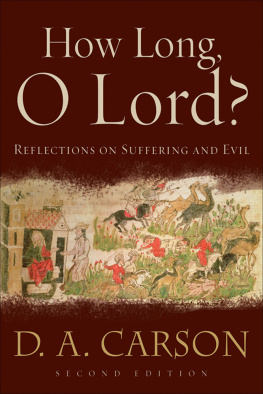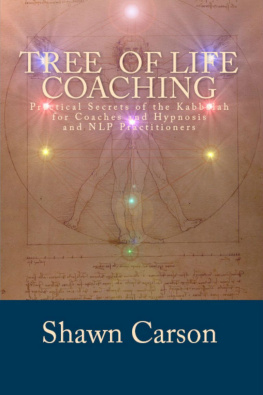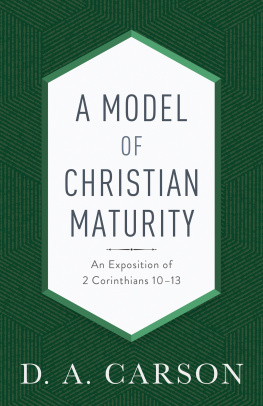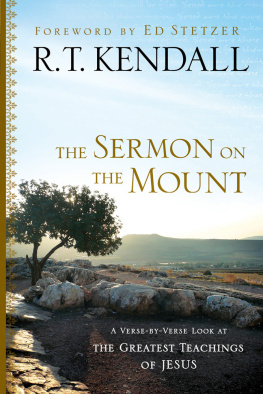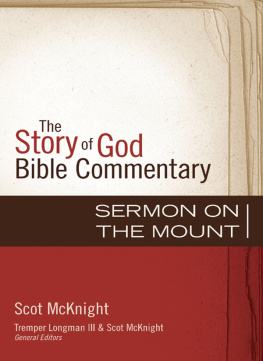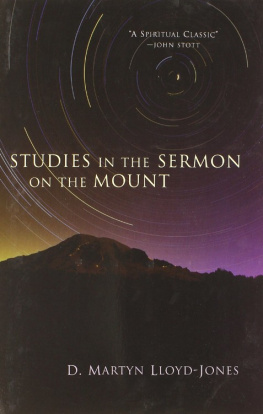1. The Kingdom of Heaven: Its Norms and Witness
2. The Kingdom of Heaven: Its Demands in Relation to the Old Testament
3. Religious Hypocrisy: Its Description and Overthrow
4. Kingdom Perspectives
5. Balance and Perfection
6. Conclusion to the Sermon on the Mount
7. The Authority of Jesus
8. The Authentic Jesus
9. The Mission of Jesus
10. The Trustworthiness of Jesus
11. The Compassion of Jesus
12. The Divisiveness of Jesus
Appendix B: Reflections on Theological Interpretations of the Sermon on the Mount
Preface
E ARLY IN 1974 I was asked to give six addresses on the Sermon on the Mount to the Cambridge Inter-Collegiate Christian Union (CICCU). These addresses, slated for the Easter term of 1975, consumed a large part of my time and energy for the six weeks over which they were spread. I do not think I have ever enjoyed teaching people the Scriptures as much as I enjoyed speaking to the four or five hundred students who gathered every Saturday night. Unusually receptive, they challenged me by their genuine attentiveness to the Word of God.
Since then I have repeated the series two or three times, in churches located in British Columbia. As time has permitted, I have revised the series, writing it in a form more congenial to the printed page than a sermon or Bible reading usually is. However, I have deliberately not removed all traces of the earlier form. I have added two appendices, largely elicited by questions that have been put to me. Some of the material in the first appendix was interwoven into the original series, but I have thought it best in this book to separate it.
How does this volume differ from those now in circulation which deal with the same passage? Why offer another study on the Sermon on the Mount? Several reasons spring to mind. This exposition is shorter than most others designed for the general reader; but that is because it is more condensed. I have tried hard to be freer from the categories of systematic theology than some of my predecessors, though I want my work to be informed by the most significant theological points of view. The material in the two appendices is not usually included in popular expositions, but it may help the interested reader to view the interpretation of the Sermon on the Mount with a more balanced vision and with deeper understanding. But more than any other reason, I am offering these studies to a larger circle because I am deeply convinced that the church of Christ needs to study the Sermon on the Mount again and again.
I take pleasure in recording here my deep gratitude to many scores of writers. I have read some of the popular expositions, but apart from the sacred text itself I have made it a point above all to read the best commentaries I could secure. W. S. Kissingers The Sermon on the Mount: A History of Interpretation and Bibliography has been an invaluable tool in the later stages of study. A gold mine of information, it introduced me to some serious works of which I was quite unaware. Informed readers will also sense my indebtedness to Robert Banks Jesus and the Law in the Synoptic Tradition. I want to record my thanks to Tyndale House, Cambridge, which afforded me the opportunity to read a copy of Banks doctoral dissertation before his published revision put in an appearance. I have read only a few foreign-language works on the Sermon on the Mount. This I regret, just as I regret that I could not canvass more of the enormous body of secondary literature. Even in the journals that have crossed my desk during the past quarter there has not been any shortage of studies on these three chapters of Matthews Gospel.
My sincere gratitude is also extended to Eileen Appleby, who transcribed the tapes of the original addresses; and to Sue Wonnacott, and especially to Diane Smith, who transformed an excessively messy manuscript into neat and near-flawless typescript.
Soli Deo Gloria.
D. A. Carson
Northwest Baptist Theological Seminary
Vancouver, Canada
The Kingdom of Heaven
Its Norms and Witness (5:316)
Introduction
The more I read these three chaptersMatthew 5, 6, and 7the more I am both drawn to them and shamed by them. Their brilliant light draws me like a moth to a spotlight; but the light is so bright that it sears and burns. No room is left for forms of piety which are nothing more than veneer and sham. Perfection is demanded. Jesus says, Be perfect... as your heavenly Father is perfect (5:48).
The great theme of these three chapters is the kingdom of heaven. The kingdom of heaven is Matthews customary expression for what other New Testament writers preferred to call the kingdom of God. Matthew was like many Jews of his day who would avoid using the word God. They felt it was too holy, too exalted; therefore euphemisms like heaven were adopted. In meaning, kingdom of heaven is identical to kingdom of God (cf. Matt. 19:23f.; Mark 10:23f.; etc.).
Four preliminary observations may help to clarify these expressions. First, the idea of kingdom in both the Old and New Testaments is primarily dynamic rather than spatial. It is not so much a kingdom with geographical borders as it is a kingdominion, or reign. In the Scriptures, the spatial meaning of kingdom is secondary and derivative.
Second, although the kingdom of God can refer to the totality of Gods sovereignty, that is not what is in view in the Sermon on the Mount. Indeed, in the universal sense, Gods kingdomhis reignis eternal and all-embracing. No one and nothing can escape from it. From the time of Jesuss resurrection and exaltation onward, all of this divine sovereignty is mediated through Christ. Jesus himself taught this: All authority in heaven and on earth has been given to me (Matt. 28:18). This universal authority is what Paul refers to when he says that Christ must reign until God has put all his enemies under his feet (1 Cor. 15:25). Some refer to this kingdom as the mediatorial kingdom of God, because Gods authority, his reign, is mediated through Christ.


